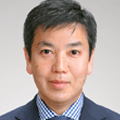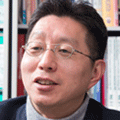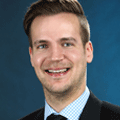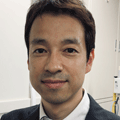
Biological Phenomena and Functions within Micro- and Nanospace
Organizer: Kazuaki Furukawa (Meisei Univ.)
Thanks to the downsizing of medical devices, we have benefited in our daily life: thinner needle reduces pain in injection, Lab on a Chip technology reduces an amount of sample for medical check. In this symposium, we focus on cutting-edge biological research in combination with micro and nanostructures. Some new aspects in biological phenomena within such small spaces will be introduced by four invited speakers. They must be essential to further developments in biological devices and applications.
| Session Time | Name, Affiliation, Paper Title and Short Biography |
|---|---|
| 28C-4-1 16:00 | Prof. Manabu Tokeshi, Hokkaido Univ., Japan Microfluidic devices for clinical applications  Manabu Tokeshi is a Professor at the Division of Applied Chemistry at Hokkaido University. He received his PhD degree from Kyushu University in 1997. After a research fellow of the Japan Society of Promotion of Science at The University of Tokyo, he worked at Kanagawa Academy of Science and Technology as a research staff (1998-1999), a group subleader (1999-2003), and a group leader (2003-2004). He also worked at the Institute of Microchemistry Technology Co. Ltd. as President (2004-2005) and at Nagoya University as an Associate Professor (2005-2011). In 2011, he visited Karolinska Institutet as a Visiting Researcher and he joined the Hokkaido University as a Professor. |
| 28C-4-2 16:30 | Prof. Beomjoon Kim, Univ. of Tokyo, Japan Biomolecular needling systems for medicals  Beomjoon Kim got his Ph.D. in Department of Precision Engineering, the University of Tokyo in 1998. He was a CNRS Associate Researcher for Microsensors, Nano-instruments for Nanotechnology in CNRS at Besancon, France at 1999. He worked also in MESA+ Research Institute, University of Twente, Netherlands. Since September 2000, he has been an Associate Professor (~ March 2014) and currently a Professor of Institute of Industrial Science, the University of Tokyo (Dept. of Precision Engineering). He is a director of LIMMS/CNRS-IIS, and also in charge as a chair of corporate sponsored research division of “Virological Medicine”, at I.I.S., the University of Tokyo. |
| 28C-4-3 17:00 | Dr. Philipp Rinklin, Technical Univ. of Munich, Germany Additive fabrication for low-cost, large-area bioelectronics  Dr. Rinklin conducted his PhD research at the Research Center Jülich. His thesis on the mechanical, chemical, and thermal stimulation of cellular networks earned him a PhD title with RWTH Aachen in 2014. Following additonal post-doctoral research in Jülich, Dr. Rinklin joined in starting the Neuroelectronics lab at the Technical University of Munich in 2015. Since then he focuses on printing-based fabrication for bioelectronics and life sciences. His interests cover inkjet, aerosol jet, stereolithography, or capillary plotting in this context. In particular, he aims to exploit these technologies in the development of large-area, low-cost sensor and stimulator arrays. |
| 28C-4-4 17:30 | Dr. Masanobu Iwanaga, NIMS, Japan Recent progress in metasurface biosensors  Dr. Masanobu Iwanaga is a Chief Researcher at National Institute for Materials Science (NIMS), Tsukuba, Japan. He joined NIMS in 2009. He is currently working on metasurface biosensors and subwavelength photonic devices. His research topics cover metasurfaces, nano- and microphotonic devices, metamaterials, plasmonics, and enhanced light-matter interaction in artificial nanostructures. |



